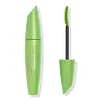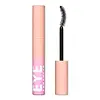What's inside
What's inside
 Key Ingredients
Key Ingredients

 Benefits
Benefits

 Concerns
Concerns

 Ingredients Side-by-side
Ingredients Side-by-side

Water
Skin ConditioningAcrylates Copolymer
Glyceryl Stearate
EmollientDisteardimonium Hectorite
StabilisingStearic Acid
CleansingCopernicia Cerifera Wax
Propylene Glycol
HumectantTriethanolamine
BufferingPolyethylene
AbrasiveLecithin
EmollientPropylene Carbonate
SolventPolyvinyl Alcohol
Synthetic Wax
AbrasiveOleic Acid
EmollientAlcohol Denat.
AntimicrobialBenzyl Alcohol
PerfumingPanthenol
Skin ConditioningPhenoxyethanol
PreservativeMethylparaben
PreservativeGlycerin
HumectantEthylparaben
PreservativePropylparaben
PreservativeAscorbyl Palmitate
AntioxidantXanthan Gum
EmulsifyingTocopherol
AntioxidantTrisodium EDTA
Simethicone
EmollientTocopheryl Acetate
AntioxidantMethylcellulose
Emulsion StabilisingIron Oxides
Ultramarines
Titanium Dioxide
Cosmetic ColorantWater, Acrylates Copolymer, Glyceryl Stearate, Disteardimonium Hectorite, Stearic Acid, Copernicia Cerifera Wax, Propylene Glycol, Triethanolamine, Polyethylene, Lecithin, Propylene Carbonate, Polyvinyl Alcohol, Synthetic Wax, Oleic Acid, Alcohol Denat., Benzyl Alcohol, Panthenol, Phenoxyethanol, Methylparaben, Glycerin, Ethylparaben, Propylparaben, Ascorbyl Palmitate, Xanthan Gum, Tocopherol, Trisodium EDTA, Simethicone, Tocopheryl Acetate, Methylcellulose, Iron Oxides, Ultramarines, Titanium Dioxide
Water
Skin ConditioningAmmonium Acrylates Copolymer
Copernicia Cerifera Cera
EmollientCopernicia Cerifera Wax
Glyceryl Stearate Se
EmulsifyingCandelilla Cera
EmollientEuphorbia Cerifera Cera
AstringentSucrose Stearate
EmollientGlyceryl Stearate
EmollientVp/Hexadecene Copolymer
Propanediol
SolventC10-18 Triglycerides
EmollientLecithin
EmollientPolybutene
Cera Microcristallina
Emulsion StabilisingMicrocrystalline Cellulose
AbsorbentHydrogenated Vegetable Oil
EmollientOleic Acid
EmollientAlcohol Denat.
AntimicrobialStearic Acid
CleansingArginine
MaskingCaesalpinia Spinosa Gum
Skin ConditioningStearyl Stearate
EmollientBenzyl Alcohol
PerfumingCaprylyl Glycol
EmollientDisodium EDTA
Deceth-6
EmulsifyingDisodium Deceth-6 Sulfosuccinate
CleansingPanthenol
Skin ConditioningLaureth-30
CleansingSimethicone
EmollientSodium Dehydroacetate
PreservativeTrisodium Ethylenediamine Disuccinate
Prunus Armeniaca Kernel Oil
MaskingSodium Hyaluronate
HumectantChenopodium Quinoa Seed Extract
Skin ConditioningHydrolyzed Cicer Seed Extract
Skin ProtectingLens Esculenta Seed Extract
Skin ProtectingIron Oxides
CI 77007
Cosmetic ColorantCI 77891
Cosmetic ColorantWater, Ammonium Acrylates Copolymer, Copernicia Cerifera Cera, Copernicia Cerifera Wax, Glyceryl Stearate Se, Candelilla Cera, Euphorbia Cerifera Cera, Sucrose Stearate, Glyceryl Stearate, Vp/Hexadecene Copolymer, Propanediol, C10-18 Triglycerides, Lecithin, Polybutene, Cera Microcristallina, Microcrystalline Cellulose, Hydrogenated Vegetable Oil, Oleic Acid, Alcohol Denat., Stearic Acid, Arginine, Caesalpinia Spinosa Gum, Stearyl Stearate, Benzyl Alcohol, Caprylyl Glycol, Disodium EDTA, Deceth-6, Disodium Deceth-6 Sulfosuccinate, Panthenol, Laureth-30, Simethicone, Sodium Dehydroacetate, Trisodium Ethylenediamine Disuccinate, Prunus Armeniaca Kernel Oil, Sodium Hyaluronate, Chenopodium Quinoa Seed Extract, Hydrolyzed Cicer Seed Extract, Lens Esculenta Seed Extract, Iron Oxides, CI 77007, CI 77891
Ingredients Explained
These ingredients are found in both products.
Ingredients higher up in an ingredient list are typically present in a larger amount.
Alcohol Denat. is an alcohol with a denaturant property. It is created by mixing ethanol with other additives.
This ingredient gets a bad rep because it is irritating and drying - mostly due to its astringent property. Astringents draw out natural oils in tissue, constricting pores and leaving your skin dried out.
However, alcohol denat. is not all that bad.
Due to its low molecular weight, alcohol denat. tends to evaporate quickly. One study on pig skin found half of applied alcohol evaporated in 10 seconds and less than 3% stayed on skin.
This also helps other ingredients become better absorbed upon application.
Studies are conflicted about whether this ingredient causes skin dehydration. One study from 2005 found adding emollients to propanol-based sanitizer decreased skin dryness and irritation. Another study found irritation only occurs if your skin is already damaged.
Small amounts of alcohol are generally tolerated by oily skin or people who live in humid environments.
The rule of thumb is if this alcohol is near the end of an ingredients list, it will probably not affect your skin much.
Also...
This ingredient has antimicrobial and solvent properties.
The antimicrobial property helps preserve products and increase their shelf life. As a solvent, it helps dissolve other ingredients.
Other types of astringent alcohols include:
Learn more about Alcohol Denat.Benzyl Alcohol is most commonly used as a preservative. It also has a subtle, sweet smell. Small amounts of Benzyl Alcohol is not irritating and safe to use in skincare products. Most Benzyl Alcohol is derived from fruits such as apricots.
Benzyl Alcohol has both antibacterial and antioxidant properties. These properties help lengthen the shelf life of products. Benzyl Alcohol is a solvent and helps dissolve other ingredients. It can also improve the texture and spreadability.
Alcohol comes in many different forms. Different types of alcohol will have different effects on skin. This ingredient is an astringent alcohol.
Using high concentrations of these alcohols are drying on the skin. They may strip away your skin's natural oils and even damage your skin barrier. Astringent alcohols may also irritate skin.
Other types of astringent alcohols include:
According to the National Rosacea Society based in the US, you should be mindful of products with these alcohols in the top half of ingredients.
Any type of sanitizing product will have high amounts of alcohol to help kill bacteria and viruses.
Learn more about Benzyl AlcoholCopernicia Cerifera Wax comes from a palm tree native to Brazil; another name for this ingredient is Carnauba Wax.
This ingredient is used to thicken texture and also leaves behind a film when applied.
Fun fact: This wax has the highest melting point of all natural waxes and low solubility.
Learn more about Copernicia Cerifera WaxGlyceryl Stearate is a mix of glycerin and stearic acid.
It is used to stabilize the mixing of water and oil ingredients. By preventing these ingredients from separating, it can help elongate shelf life. It can also help thicken the product's texture.
As an emollient, it helps soften skin and supports barrier-replenishing ingredients.
In cosmetics, Glyceryl Stearate is often made from vegetable oils or synthetically produced.
This ingredient may not be fungal-acne safe
Fun fact: The human body also creates Glyceryl Stearate naturally.
Learn more about Glyceryl StearateLecithin is a term for a group of substances found in the cell membranes of plants, animals, and humans. They are made up of mixture of phospholipids.
This ingredient has emollient and emulsifying properties.
As an emollient, lecithen helps soften the skin and creates a barrier to keep moisture in.
As an emulsifier, it also helps prevent water and oil ingredients from separating. Lecithin can also help ingredients be better absorbed by the skin.
This is because the phospholipids in lecithin produce liposomes. Liposomes help other ingredients get through the skin barrier.
Depending on the source of this ingredient, lecithin may not be fungal acne safe. This is because some sources of lecithin come from soybean oil, which may feed the malassezia yeast that feeds fungal acne.
We recommend reaching out to the brand you are purchasing from to inquire about the source of their lecithin.
Some other names for this ingredient include soy lecithin and deoiled soy lecithin.
Learn more about LecithinOleic Acid is an Omega-9 fatty acid. It can be found in many plant oils such as avocado and marula oils.
This ingredient is used to enhance the texture of products and as a cleansing agent.
Oleic Acid may not be fungal acne safe.
Learn more about Oleic AcidPanthenol is a common ingredient that helps hydrate and soothe the skin. It is found naturally in our skin and hair.
There are two forms of panthenol: D and L.
D-panthenol is also known as dexpanthenol. Most cosmetics use dexpanthenol or a mixture of D and L-panthenol.
Panthenol is famous due to its ability to go deeper into the skin's layers. Using this ingredient has numerous pros (and no cons):
Like hyaluronic acid, panthenol is a humectant. Humectants are able to bind and hold large amounts of water to keep skin hydrated.
This ingredient works well for wound healing. It works by increasing tissue in the wound and helps close open wounds.
Once oxidized, panthenol converts to pantothenic acid. Panthothenic acid is found in all living cells.
This ingredient is also referred to as pro-vitamin B5.
Learn more about PanthenolSimethicone is a silicone. It is an emollient and used to reduce foaming in a product. It is also often used to coat sunscreen ingredients for better spreadability.
This ingredient is created by mixing dimethylpolysiloxane and hydrated silica.
Stearic Acid is a fatty acid. It is an emollient, emulsifier, and texture enhancer.
As an emollient, stearic acid helps soften skin. It aids the skin's protective barrier by preventing water loss. It also provides a gentle cleansing effect without stripping away natural oils.
Stearic acid may also be used to enhance the texture of products. It can add volume and stabilize ingredients such as water and oil. This can help water and oil ingredients from separating.
Sources of stearic acid include animal or vegetable fats/oils such as coconut or shea. It can be naturally found in butter, cocoa butter, shea butter, vegetable fats, and animal tallow.
This ingredient may not be Malassezia folliculitis, or fungal-acne safe.
Learn more about Stearic AcidWater. It's the most common cosmetic ingredient of all. You'll usually see it at the top of ingredient lists, meaning that it makes up the largest part of the product.
So why is it so popular? Water most often acts as a solvent - this means that it helps dissolve other ingredients into the formulation.
You'll also recognize water as that liquid we all need to stay alive. If you see this, drink a glass of water. Stay hydrated!
Learn more about WaterThis ingredient is a combination of red, black, and yellow iron oxide pigments. This combination of colors is usually found in foundation, because it results in a "skin" color.